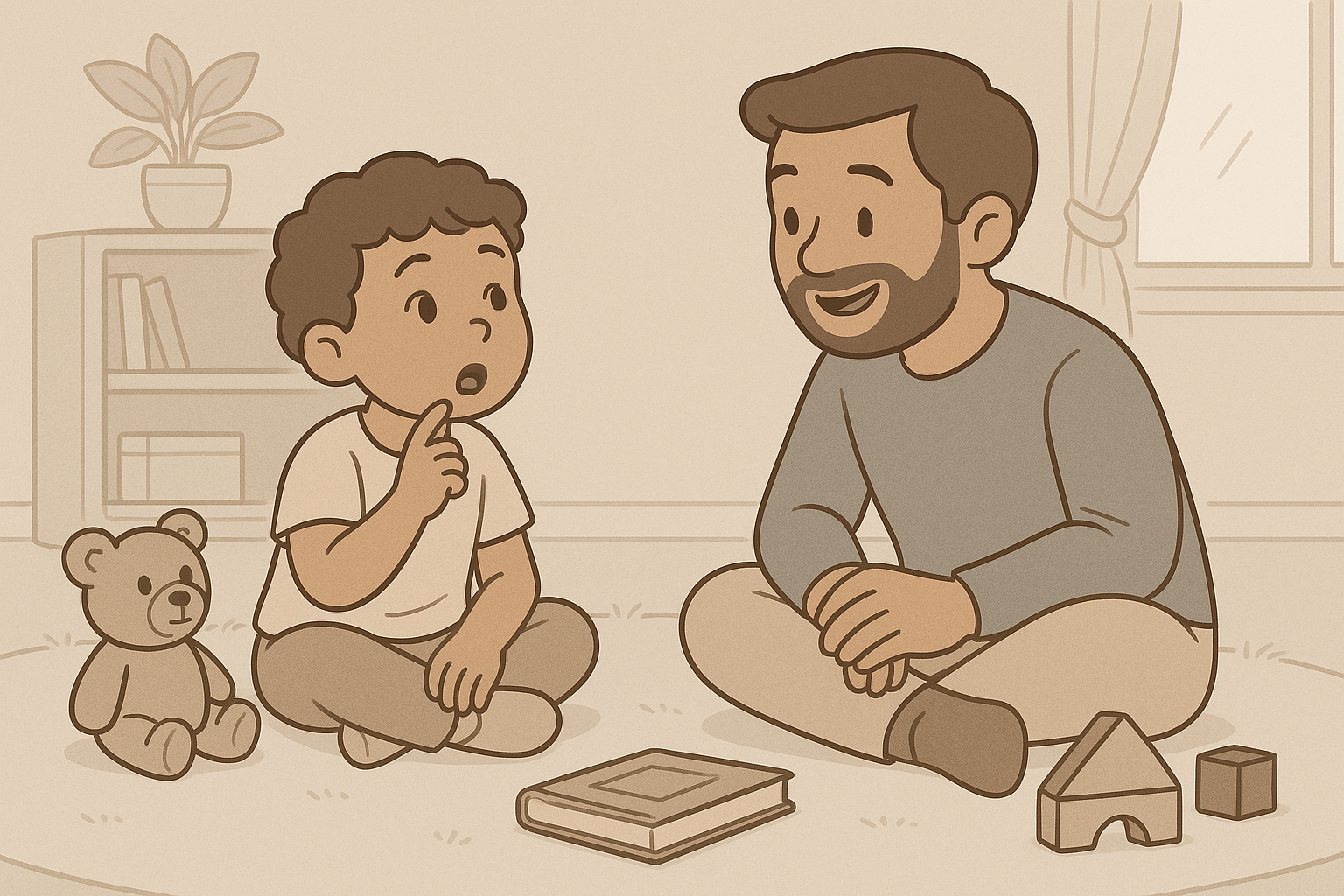The Importance of Open-Ended Questions in Learning
The Importance of Open-Ended Questions in Learning
Why Questions Matter More Than Answers
“Why?” “How?” “What if?” — these tiny phrases do something magical.
They open doors in a child’s mind.
Every time you ask an open-ended question, you’re inviting your child to think, imagine, reason, and communicate. Unlike yes-or-no questions (“Did you like it?”), open-ended ones (“What was your favorite part?”) spark curiosity and reflection — the building blocks of critical thinking and problem-solving.
What Are Open-Ended Questions?
Open-ended questions can’t be answered with a simple “yes” or “no.” They begin with words like:
What
Why
How
Tell me about
What do you think
Instead of confirming information, they invite exploration, prediction, and storytelling.
For example:
❌ “Did you like the story?”
✅ “What did you like about the story?”
This simple shift changes the whole tone of the interaction — it becomes collaborative, not corrective.
Why Open-Ended Questions Fuel Learning
1. They Build Critical Thinking
When kids explain their ideas, they practice reasoning — connecting cause and effect, weighing options, and using logic.
“Why do you think the tower fell over?”
“What could we do differently next time?”
They’re learning to analyze problems, not just answer them.
Related reading:
How to Teach Early Problem-Solving with Puzzles and Blocks →
Explore how hands-on play strengthens reasoning and persistence.
2. They Strengthen Language Skills
Open-ended questions expand vocabulary and expressive language. Children learn new sentence structures as they describe, explain, or compare.
“Tell me what happened when the puppet went outside.”
Even short answers build syntax and storytelling rhythm.
Related article:
Speech and Language Games for Toddlers →
See how playful conversations nurture expressive speech.
3. They Foster Emotional Intelligence
Questions about feelings teach children to name and understand emotions — both their own and others’.
“How did you feel when that happened?”
“What do you think made your friend sad?”
This reflection deepens empathy and self-regulation — vital social-emotional skills for school readiness.
Related reading:
Puppet Stories That Teach Emotions and Sequencing →
Learn how pretend play builds emotional vocabulary and awareness.
4. They Encourage Independence
When adults ask questions instead of giving answers, children gain ownership of their thinking.
“What do you think we should try?”
“How could we solve that problem?”
This develops confidence, autonomy, and a love of discovery — the heart of lifelong learning.
Related article:
How to Nurture a Growth Mindset in Early Learners →
Explore how curiosity and encouragement help kids stay motivated through challenges.
How to Use Open-Ended Questions in Everyday Life
You don’t need a special activity or script — the best learning happens in the flow of daily moments.
Here’s how to weave open-ended questioning into your routines.
1. During Play
Playtime is rich with opportunities for deep conversation.
Example prompts:
“What are your animals doing today?”
“What will happen next in your story?”
“How can we make your tower stronger?”
These questions invite imagination, planning, and sequencing.
Related reading:
Encouraging Storytelling and Imagination Through Play →
See how make-believe builds creativity and communication.
2. During Art and Creative Time
Art gives kids a way to express what words can’t always capture.
Instead of saying “That’s pretty,” try:
“Tell me about your picture.”
“What made you choose those colors?”
You’re showing that you value process over product — the essence of open-ended learning.
Related article:
Teaching Colors and Shapes Through Play →
Turn simple art moments into early learning magic.
3. During Reading
Storytime becomes richer when it’s interactive.
Ask questions before, during, and after the story:
“What do you think this book will be about?”
“Why do you think the character did that?”
“How would you end the story?”
This builds comprehension, prediction, and empathy.
4. During Outdoor Exploration
Nature invites curiosity naturally — it’s the perfect classroom.
Ask:
“What do you notice about this leaf?”
“Why do you think the clouds are moving?”
“How does the wind feel on your face?”
By naming observations, kids strengthen both science reasoning and descriptive language.
Related article:
Early STEM at Home: Simple Science Projects for Ages 3–6 →
Discover how open-ended exploration supports scientific thinking.
5. During Problem Solving
When a challenge arises (a toy breaks, a block tower falls, or sharing gets tough), resist solving it right away.
Instead, guide your child’s reflection:
“What could we try?”
“What might happen if we did it another way?”
This builds perseverance and emotional regulation — turning frustration into learning.
Open-Ended vs. Closed-Ended: Spot the Difference
Notice how the open version encourages dialogue instead of one-word answers.
How to Keep It Balanced
You don’t need every question to be open-ended — children also benefit from structure and clarity.
A healthy mix of both types keeps conversations natural and purposeful.
✅ Use open-ended questions for exploration and creativity.
✅ Use closed-ended questions for clarity, direction, or transitions.
Tips for Parents
Pause after asking. Give your child time to think — silence means processing.
Follow their lead. If they shift topics, go with it — that’s curiosity in action.
Rephrase often. Younger kids may need simplified versions of “why” questions.
Model curiosity. Show that you wonder too: “I’m not sure — what do you think?”
This models lifelong learning — and turns you into a co-explorer, not just a teacher.
This content is for educational purposes and is not a substitute for professional medical or psychological advice.
Popular Parenting Articles





